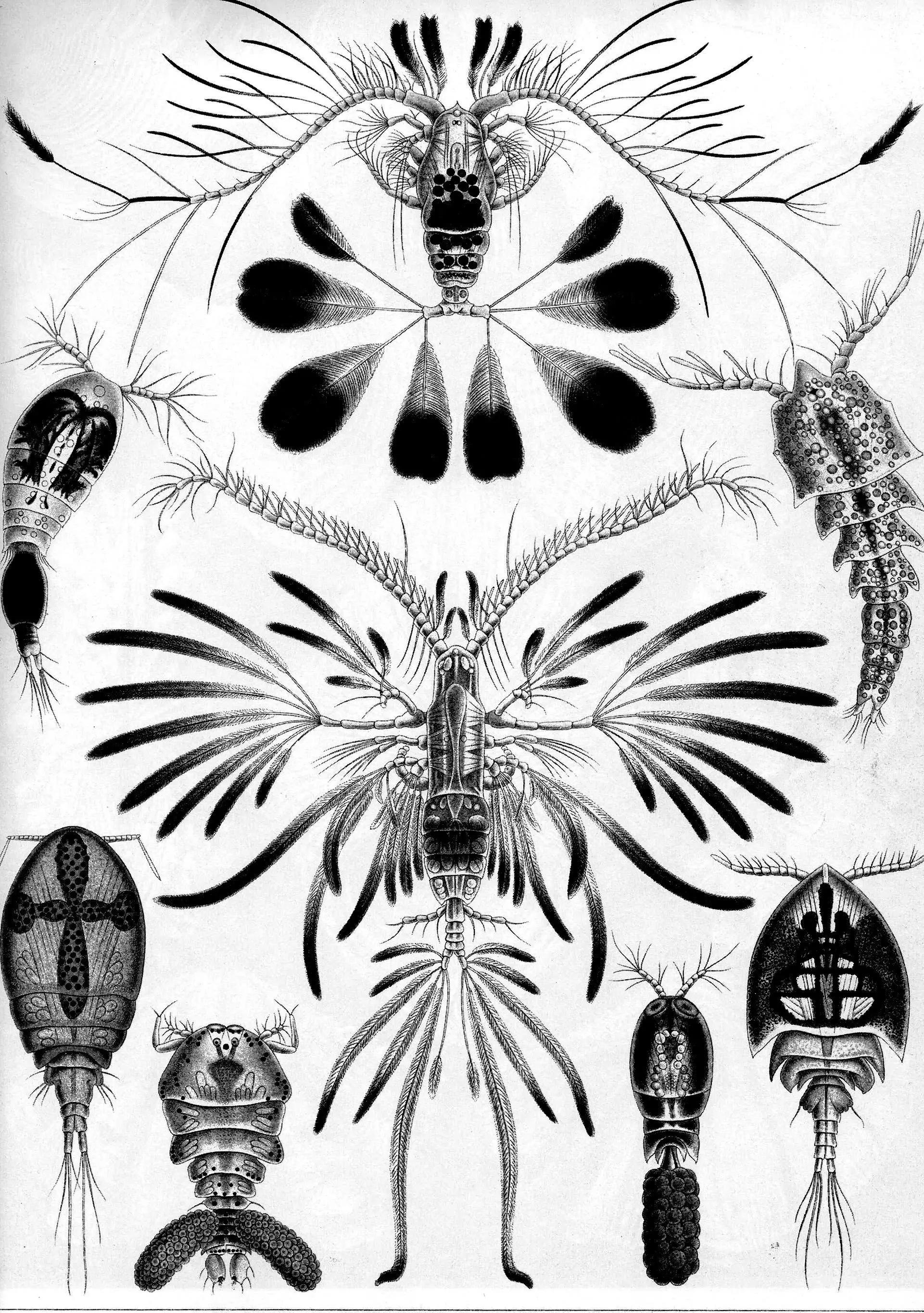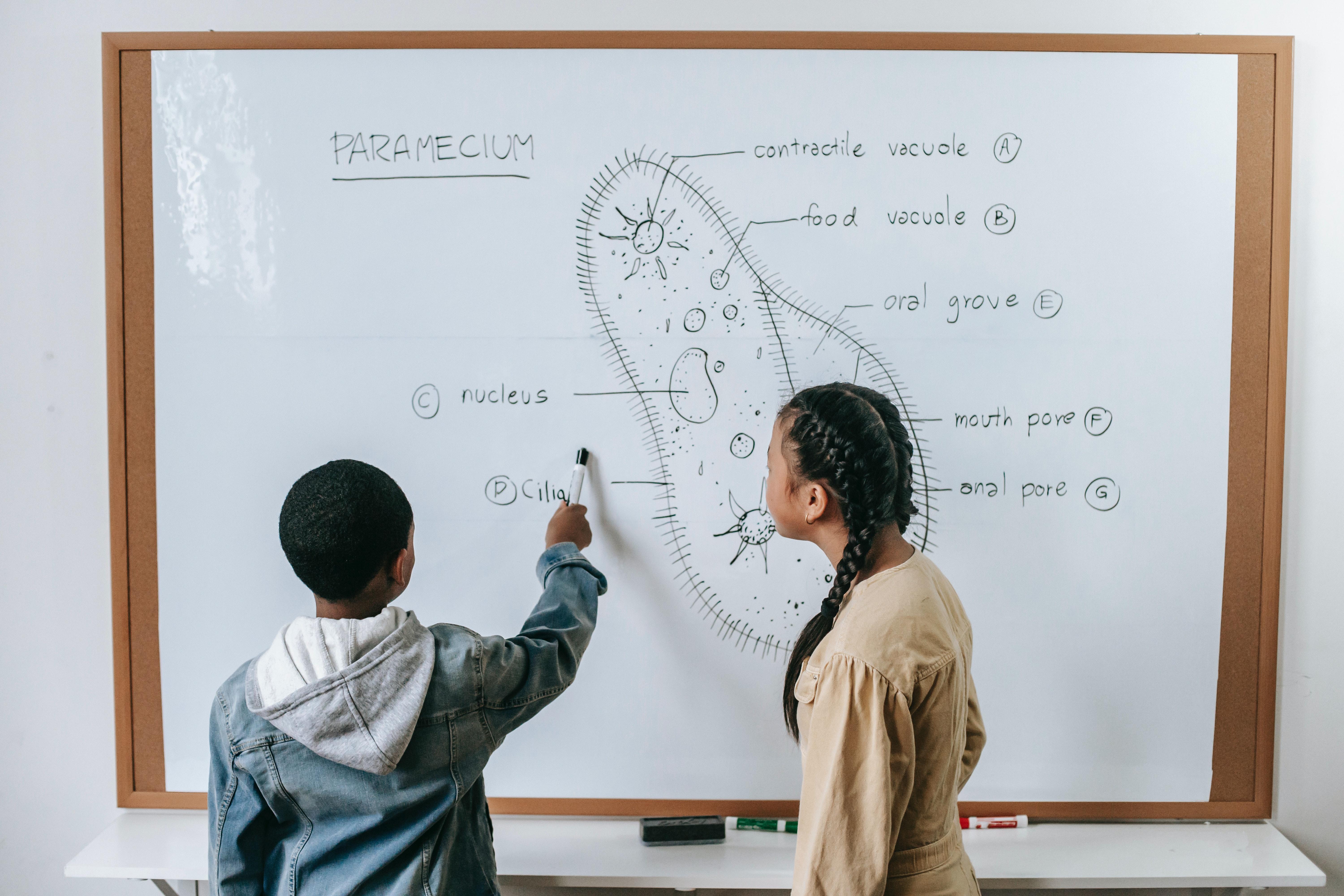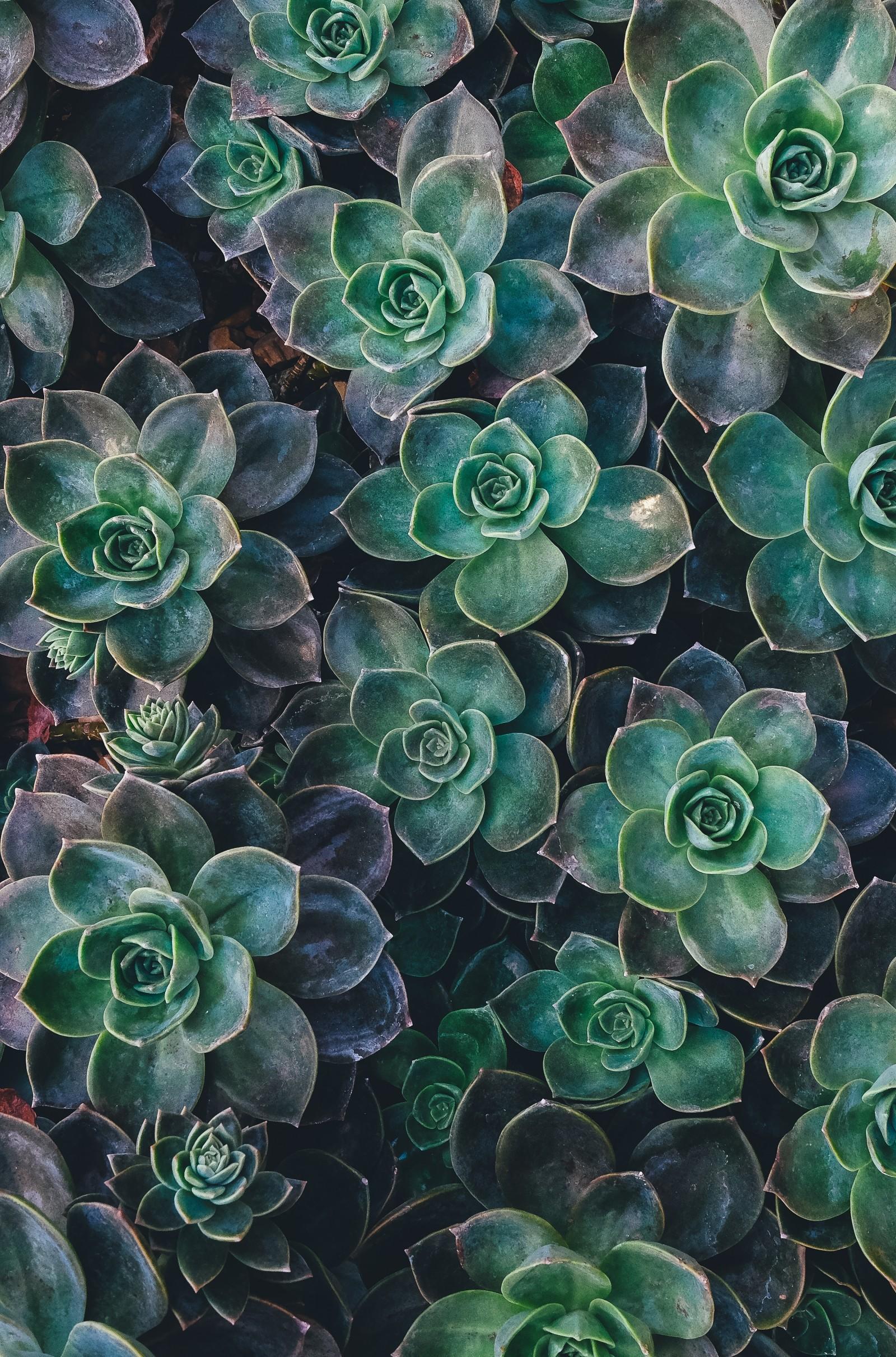Do you consider yourself a creative person and a lover of biology? Do you love to paint? Would you like to capture all your creativity and learn how to draw the human body, the structure of plants and flowers? Perhaps it has not crossed your mind that there are a thousand ways to connect your creativity with one of the most exciting sciences!
Art is the human being's interpretation of the real or the imaginary world. Humanity's perceptions, emotions, and sensations have been captured to last over time through art. Art is the creative transmission of ideas and values inherent to any human culture across space and time. But not only that! The study of the human being and all the surrounding organisms has been possible through art to detail nature's complexities. The world of art has a much greater connection with biology than you can imagine!
But how can we connect biology with art? Well, if you had the scientific illustration in mind, you were correct! The scientific illustration refers to a highly detailed image representing a scientific concept to inform and communicate.
Read on to discover how the biological sciences and art have combined to represent natural phenomena over time. Learn how Biology affects our everyday lives, and love Biology most creatively!


Scientific Illustration through History
Scientific illustration is a discipline where scientific knowledge and research are combined with creativity and the capacity for observation. Although scientific illustration has taken place throughout the history of humanity, its first references emerged until the Enlightenment movement in Europe during the 18th century. For centuries, scientific illustration was the only way to study societies, understand the human body and nature. But to understand the origin of everything, we have to go a few million years back to the beginning of our times! Are you ready to travel to the very past? Fasten your seatbelt!
The beginning of time: Cave paintings
Let's start our journey back to the Paleolithic, Mesolithic, and Neolithic periods when cave paintings were in full swing! We can identify them as the greatest exponent of prehistoric art, captured on rocks or caves. It is a type of rock art representing the economic, social, religious, and geographical systems and the first pictorial records of human anatomy. Did you know that some of the cave paintings are about 40,000 years old? Incredible right!?
Cave paintings consist of four primary techniques. The first is the petroglyphs or engravings caused by scraping on a rock. The second is the pictograph, which was also made on rocks with black, yellow, green, or copper oxide pigments. Then we find another type of pictograph, which is a mixture of engravings and paintings, and finally, the geoglyphs, large-scale drawings made on the earth's surface.
Since most cave paintings are found inside natural caves, they have managed to withstand the passing of centuries to be appreciated and studied. Some of the most famous cave paintings are in Lascaux, France, and Altamira, Spain.
Alexandria and ancient Egypt
Did you know that Egyptians invented maths, geometry, astronomy, accounting and made significant contributions to medicine, human biology, and paper creation? Believe it or not, even the origins of scientific illustration also date back to Ancient Egypt due to historical records describing their embalming techniques.
The mummification (also called the embalming technique) helped Egyptians study the functioning of the human body. Not surprisingly, they earned the title of the best anatomists of the ancient world. The first reference of a medical book and anatomical studies was written by Manetho, an Egyptian historian who lived in Alexandria during the Hellenistic period, in the 3rd century B.C.
The study of Human Anatomy flourished during this period, and some founding members of the so-called School of Alexandria are also considered crucial pioneers of medicine. Herophilus was one of the first anatomists and wrote a treatise of the cerebral, cardiovascular, digestive, and reproductive systems. Another important figure was Erasistratus, considered the first pathologist who also made contributions to human anatomy and physiology, describing the functioning of the heart, prostate, trachea, liver, and bile ducts.

Galeno's contributions
Claudio Galeno is one of the most famous doctors and anatomists of Antiquity. He lived in the 2nd century and was the private physician of Emperor Marco Antonio. He dissected animals to study the functioning of the muscles, the cranial nerves, the spinal cord, the circulatory system, and the kidney and the bladder functions. Galeno wrote more than 26 writings on anatomy, physiology, and pathology. Claudio Galeno's studies represented pure observation and experimentation and dominated Western medicine for about fifteen centuries until the late Middle Ages.
Leonardo Da Vinci: The Creator of Scientific Illustration
One of the most famous Renaissance figures in history is Leonardo Da Vinci. Da Vinci based his study on the modern scientific method and empiricism (the philosophical theory based on experience and evidence). He is the most representative figure who used art and science to conduct his scientific research. His written works were mainly accompanied by illustrations, representing advances in anatomy, medicine, botany, zoology, and geology.
In medicine, Da Vinci's contributions helped to understand the functioning of the circulatory, muscular, skeletal, and reproductive systems. But even his sketches came to inspire the pictorial representation of modern mechanics and geometry. Such a genius!
Vesalius: The Founder of Modern Human Anatomy
In the middle of the 16th century, Andreas Vesalius was one of the most influential doctors and authors. In 1543 he published his "De Humani Corporis Fabrica," a set of books on human anatomy and the examination of the organs through very detailed drawings, the reason why today he is known as the founder of modern human anatomy. Vesalius was one of the first doctors to question Galenic medicine based on his experience as a dissector. He corrected almost all of Galeno's descriptive errors in his work, identifying new human anatomical parts.
Robert Hooke
Hooke was an English scientist, considered one of the most famous experimental scientists. In 1665 he published the book "Micrographia," where he detailed his findings through precise drawings, becoming a fundamental pillar for the development of cell biology. His work describes the cellular structure of cork. After observing it through a microscope, Hooke realized that it was composed of polyhedral cavities similar to the cells of a honeycomb.
Charles Darwin
The Englishman Charles Darwin is one of the most famous scientists of all time. He is the author of the Theory of Evolution and Natural Selection published in 1859 in his book: "The Origin of Species." His study was entirely devoted to botany, ornithology, and human anatomy.
Darwin did not consider himself a designer. Due to this, several of his illustrations were made by famous artists and illustrators, such as Joseph Wolf, Walter Hood Fitch, Georg Brettingham Sowerby, Briton Rivière, John Gould and Thomas Waterman Wood. Each scheme was carefully thought out and designed by Darwin, representing every detail of the illustration.
Find out more about Charles Darwin here! And, if these fun scientific facts weren't enough for you, find out more about extraordinary discoveries in biology here!

Characteristics of scientific illustration in the present
In Biological Sciences, scientific illustration better complement learning within research and education and generally have outreach, documentary, or reinforcement functions. The scientific illustration will always aim to express certain information in detail, for example, differences between species or cell structures. For these reasons, the exactitude of photography and scientific illustration are techniques that complement today, taking advantage of all these new technologies. Scientific photography is a set of techniques that allow us to obtain information limited to the human eye. Through it, we can deepen our understanding of the natural phenomena that sometimes could be imperceptible. Because of this, in your Biology books, you will always find drawings and photographs to explain cell structures, for example. Photographic techniques are widely used in industry, medicine, astronomy, archeology, scientific research, and visual arts.
Biological Photography
Biological photography is mainly used in scientific research, and it is often used, for example, in natural science and medical science books. To become a Biological photographer, you must have a thorough knowledge of photography and the operation of photographic equipment and an excellent understanding of the biological sciences. Several other designated names for a biological photographer include a medical photographer, biographer, and scientific photographer.
This type of photography is also called bio photography and involves three general phases: photomicrography, photomicrography, and photography of larger specimens.
However, coming back to scientific illustration, we can find two main slopes:
1) Traditional techniques: Among the traditional methods of scientific illustration, the following stand out:
- Scratchboard: consists of inking the paper and then 'scratching' with sharp tools the lines that make up the image. The scratchboard technique can represent living beings with hair, for example, and replicate different textures.
- Graphite: Graphite is easy to blur, so it helps us create volumes and depth, providing three-dimensionality.
- Ink: The ink can be used with markers of different thicknesses where we can control the pressure. Ink drawing is generally the most used technique in botany, for example.
- Pencil: One of the main tools of artistic expression. Through the techniques of color and the precision of the tip, it allows a detailed finish.
- Watercolor: is one of the most popular color techniques in scientific illustration because we can achieve different depths and transparencies.
2) Digital techniques: The digital methods involve vector illustration, digital painting, and photo retouching. We find Adobe Illustrator and Adobe Photoshop among the most popular digital tools, where you can draw freehand and kick start your creativity!
Drawing is an excellent way to know and understand the composition and functioning of everything that surrounds us, as well as exploit our creativity! Also, did you know that today, there is a good demand for scientific illustrators in Canada, which are necessary for different fields, such as museums, pharmaceutical laboratories, film industry, video games, scientific publishers, among many others? A new career path to consider!
Moreover, you can discover more about how the subject has evolved over the years by visiting this blog.

Alphabet soup: Scientific illustration through history!
Now that you have the basic vocabulary of how scientific illustration has evolved through history, let's do an activity to refresh that memory! Identify the ten words related to the artistic side of biology! The best way to learn is by playing!
- ACROSS
1. The cave paintings are graphic representations captured on rocks or caves and whose origin dates back to this period.
2. Place where the first references to scientific illustration arose during the Enlightenment movement.
3. One of the most famous doctors and anatomists of Antiquity.
4. One of the most popular color techniques in scientific illustration.
5. Author of the Theory of Evolution and The Natural Selection published in his book "The Origin of Species":
- DOWN
6. Colored material used to paint cave paintings.
7. The process by which the body is preserved.
8. His contributions were a fundamental pillar for the study of cell biology.
9. Philosophical theory based on experience and evidence.
10. Technique that complements the scientific illustration.
| Q | O | J | J | U | J | P | P | O | H | A | R | T |
| D | P | Q | Z | C | N | Z | H | A | R | Q | P | I |
| F | M | E | J | E | M | L | O | G | P | H | P | |
| P | A | L | E | O | L | I | T | H | I | C | A | M |
| S | D | P | L | T | A | M | O | A | G | L | C | U |
| D | A | ? | R | A | Z | R | G | E | M | R | V | M |
| R | Z | X | H | M | G | N | R | O | E | Q | W | M |
| E | U | R | O | P | E | A | A | ? | N | X | Q | I |
| H | C | T | O | Z | M | S | P | D | T | N | Q | F |
| J | B | Z | K | R | P | G | H | F | C | B | M | I |
| A | V | I | E | Y | I | U | Y | R | H | D | P | C |
| R | E | O | P | I | R | Q | F | X | W | V | B | A |
| D | D | A | R | W | I | N | W | P | L | U | N | T |
| W | A | T | E | R | C | O | L | O | R | A | R | I |
| Z | E | I | R | W | I | Q | G | A | L | E | N | O |
| E | A | W | V | B | S | F | A | W | II | P | M | N |
| I | Q | O | ? | N | M | S | D | C | N | C | D | V |
Alternatively, you can read our blog on some of the vocabulary you will need as a Biology student!

Why Draw and Learn?
Drawing is an excellent skill to explain the biological sciences better since it allows us to describe particular characteristics of the specimens in a very detailed way. For example, through drawing, we could study the structure of cells organelles to the immensity of the galaxies. We need to have good observation, focus, and deep study of a particular organism.
If you enjoy drawing, have you ever thought about studying biology through it? Scientific illustrations and diagrams can be excellent teaching resources that can help you understand more clearly biological concepts and processes that can be complex, such as cellular structures, anatomical, histological, metabolism, botanicals, to zootechnics. Imagination and creativity have no limits!
Having a graphic representation of a specific concept can even help you memorize all the elements involved. Drawing in Biology will simplify the information, highlight what is essential, and help you be more creative! Using scientific illustration techniques, paper, and a lot of imagination will help you better understand your knowledge of Biological sciences! Who said we couldn't learn creatively?
Qualities of an Excellent Scientific Illustrator
If you are considering becoming a scientific illustrator, among the essential qualities we strongly recommend you to develop are:
- The curiosity about knowing the natural world.
- Being an observer and setting a selective gaze.
- Gain some knowledge of painting and design techniques, such as watercolor, pencil, inks, and oil painting.
- Gain a good understanding of digital illustration.
- Learn to enjoy the process.
Did you know that scientific illustrators can pursue a professional career in different disciplines such as Astronomy, Archeology, Medicine, Dentistry, Botany, Zoology, Microbiology, and Biology?

If you are interested in delving a little more into Scientific Illustration, perhaps you can take a look at the following programs:
- University of Toronto: Master of Science in Biomedical Communications (BMC) prepares students to learn the usage of visual tools, medical illustration, media, design, animation, and virtual simulations.
- Arcadia University: The program in Scientific Illustration combines study in Biology with Fine and Applied Arts. The program prepares the students to pursue a career in biological, botanical, and medical illustration.
- University of Saskatchewan: The Bachelor of Arts and Science (B.A. & Sc.) combines the Science disciplines with Humanities, Social Sciences, or Fine arts. It is an interdisciplinary program focused on Environment and Society, and Health Studies.
- University of New Brunswick: This Bachelor of Arts focuses on Biology and Life sciences. The students enrolled in the Art program can pursue a major in Biology, Botany, Ecology, Zoology, Organic chemistry, and Microbiology. This Biology major is available as part of a four-year Bachelor of Arts degree.
- Carleton University: Bachelor of Arts and Biology program focuses on studying core Sciences, Arts, and Social sciences and can be adapted to the individual interests and needs of the students. The biology department offers the Bachelor of Science degree and an interdisciplinary joint program with the College of Humanities.
Advantages of Learning by Drawing
Painting and drawing are some of the best ways to distract us and de-stress a bit, but did you know that drawing has many more benefits for you? Let's dive into all these benefits together!
- Contributes to improving your creativity: Creativity is the ability to generate new ideas or concepts, generally to find original solutions. Having creative thinking and an innovative personality today is highly appreciated, and if you are planning to pursue a career in scientific illustration, maybe you can start practicing now!
- Improve your way of communicating: Acquiring drawing and painting skills will help you better channel your feelings and emotions, improving your visual communication. Put on paper or canvas everything you want to express!
- Reduce your stress levels: What better than reducing daily stress by taking a moment for yourself, focusing on the nature around you, and letting your creativity speak for you? Drawing is an excellent method to reduce stress levels because it can transport your mind to another dimension!
- Work on your confidence: Through drawing and painting, you will be able to try something new, develop yourself in new environments, and face new challenges. As you meet each of these challenges, you will develop greater confidence in yourself and reinforce your self-esteem.
- Fun and entertainment: Drawing and painting can be a very entertaining hobby, and what better way to mix your passion for learning biology differently!
Learn Biology most creatively!
Have you always liked science and biology, but were you looking for a different way to learn? Do you want to learn while having fun exploiting your creativity? Do you want to get started with scientific illustration? Superprof's private biology classes will be the perfect option for you!
Superprof connects those that want to learn anything with those experts that want to teach. On the official Superprof site, you can find face-to-face or online courses on "Drawing," "Botanical drawing," or "Life drawing," as well as private classes on Molecular Biology, Cell Biology, or even Microbiology. To give you an idea, you can find more than 1300 Biology tutors or 300 tutors in illustration who can help you achieve anything you set your mind to! For example, you can search for online Biology courses here or even Life Drawing classes here!
But if you are interested in something more specific about biology, find marine biology courses here!
It does not matter in which part of Canada you live, your age, or your study grade; Superprof will be the perfect way to start a new learning path, improve your knowledge in a particular subject, or look for extra school support. Are you thinking about learning to dance the Tango, taking yoga classes, or learning to speak German? Find everything you are looking for in Superprof! Get into this exciting world so that you discover that everything that surrounds us is terrific!

Now that you finished reading our informative article, you can get all the answers to the Alphabet soup!
| P | ||||||||||||
| H | ||||||||||||
| O | P | |||||||||||
| P | A | L | E | O | L | I | T | H | I | C | M | |
| O | G | U | ||||||||||
| G | M | M | ||||||||||
| H | R | E | M | |||||||||
| E | U | R | O | P | E | A | N | I | ||||
| O | M | P | T | F | ||||||||
| K | P | H | I | |||||||||
| E | I | Y | C | |||||||||
| R | A | |||||||||||
| D | A | R | W | I | N | T | ||||||
| W | A | T | E | R | C | O | L | O | R | I | ||
| I | G | A | L | E | N | O | ||||||
| S | N | |||||||||||
| M |
- ACROSS
1. The cave paintings are graphic representations captured on rocks or caves and whose origin dates back to the: Paleolithic
2. The first references to scientific illustration arose during the Enlightenment movement in: Europe
3. One of the most famous doctors and anatomists of Antiquity: Galeno
4. One of the most popular color techniques in scientific illustration: Watercolor
5. Author of the Theory of Evolution and Natural Selection published in his book "The Origin of Species": Darwin
- DOWN
6. Colored material used to paint cave paintings: Pigment
7. The process by which the body is preserved: Mummification
8. His contributions were a fundamental pillar for the study of cell biology: Hooke
9. Philosophical theory based on experience and evidence: Empiricism
10. Technique that complements the scientific illustration: Photography
















Really a very helpful article thanks for sharing and keep on sharing!
Baccalaureate Classes provides guidelines to Baccalaureate students, We provide IB Coaching Classes and IB Home Tuition also. Enroll today for IB Tutions.